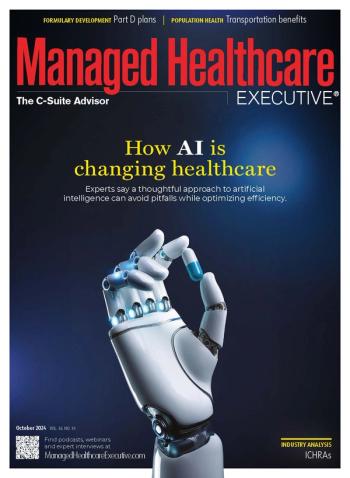
Healthcare Organizations Must Prioritize the Patient Experience and Reduce Employee Burnout
Deploying automation and other technology tools can ease the burden on overworked clinical staff and patient support worker.
The past two years have seen healthcare organizations severely impacted by COVID-19 pandemic-related disruptions exacerbating existing problems with staff burnout and patient engagement.
Before COVID-19, healthcare worker burnout had reached
This also is a huge problem because a healthcare organization can’t deliver a superior patient experience if employees are burnt out and dissatisfied. In today’s hypercompetitive healthcare market, where retail disruptors such as CVS Health and Walmart Health are leveraging strong consumer-centric business models, substandard patient and member experience will cost payers and providers in reduced revenue and diminished market share.
That’s why we can expect healthcare organizations to take bold steps in 2023 to address the root causes of burnout among clinical staff, front-desk employees and customer support workers. Leaders will focus on reducing staff burnout and improving job satisfaction.
They’ll do this in large part by deploying automation and other technology tools to ease the burden on overworked clinical staff and patient support workers.
Here are three strategies for healthcare organizations to improve the patient experience and better support their frontline workers:
Create a cohesive patient journey
Although many healthcare organizations have invested heavily in digital technologies to improve the patient experience, real-time digital interaction and support powered by artificial intelligence (AI) are still rare in patient interactions. Patients still face difficulties navigating their care journeys across disconnected engagement tools and support.
Integration problems also create data silos that make it difficult for clinicians, front-desk workers and patient support staff to do their jobs efficiently and effectively. A recent Talkdesk/CHIME
Lack of integration across the patient journey causes critical information gaps that can lead to poor patient and family experiences or create delays and confusion that cause frustration for both patients and staff. To meet patient expectations for a frictionless journey and to optimize outcomes, provider organizations must deploy technologies that can work together in a true journey.
Fortunately, more healthcare organizations recognize the need for a better patient experience. Nearly 1 in 3 (31%) respondents to the CHIME survey said they plan to offer real-time digital interaction channels, with 27% planning to provide conversational AI.
A cloud-based contact center powered by AI can help eliminate the fragmented nature of the patient experience by making omnichannel patient communication easier for contact center employees. Providing an easy and convenient “digital front door” for patients to self-navigate the healthcare system helps to eliminate information silos, harmonize the patient journey, and reduce friction and confusion.
Automation is a key enabling technology for healthcare contact center staff and patients. Repetitive tasks, such as pulling up a patient’s record or writing up notes after a call or chat, slow down employees, limiting the number of people they can help and taking their focus away from the person seeking assistance at that moment. In addition to business process automation, new innovations, like GPT technology, are capable of making an impact on staff bandwidth today. Automated call/chat summarization, smarter content recommendations and even live assistance in formulating responses to patients all help staff do their jobs faster and more accurately.
Another way automation smooths the journey is by providing patient self-service options. Instead of waiting on the phone to speak with a support center agent, many patients prefer to use multichannel tools that allow them to meet their needs. When self-service technologies are integrated with the electronic health record, patients can schedule and confirm appointments, check billing and payment details, request prescription refills, and achieve other important tasks – whenever and wherever it’s convenient for them.
Real-time, intelligent support for agents
Healthcare contact center workers are placed in stressful situations constantly because they must try to help patients who may be angry, frustrated or even frightened. Such patient encounters can be overwhelming to agents who lack the training or experience to navigate them successfully and empathetically.
AI-based contact center technology can perform intent detection in an interaction, serving recommended next-best actions to the agent in real time. Contact center AI is trained to recognize specific keywords and phrases, and it can offer accurate answers for agents as it listens in their conversations in real-time. Sentiment analysis also applies AI to detect positive and negative emotions in conversations. Supervisors can use data from sentiment analysis for performance coaching and recognition. Providing real-time assistance to support agents empowers them to better assist patients, increasing job satisfaction and performance.
Pay attention to signs of burnout
The best way for healthcare organizations to deal with burnout among support center workers is to acknowledge these employees and their concerns of danger signs. A proactive awareness of lower productivity, fewer satisfied patients and excessive absences can help leaders stay ahead of burnout issues.
By proactively communicating with contact center employees — many of whom may be working remotely — healthcare organizations can reduce turnover and increase job satisfaction.
Patty Hayward is the general manager of healthcare and life sciences at
Newsletter
Get the latest industry news, event updates, and more from Managed healthcare Executive.


















































